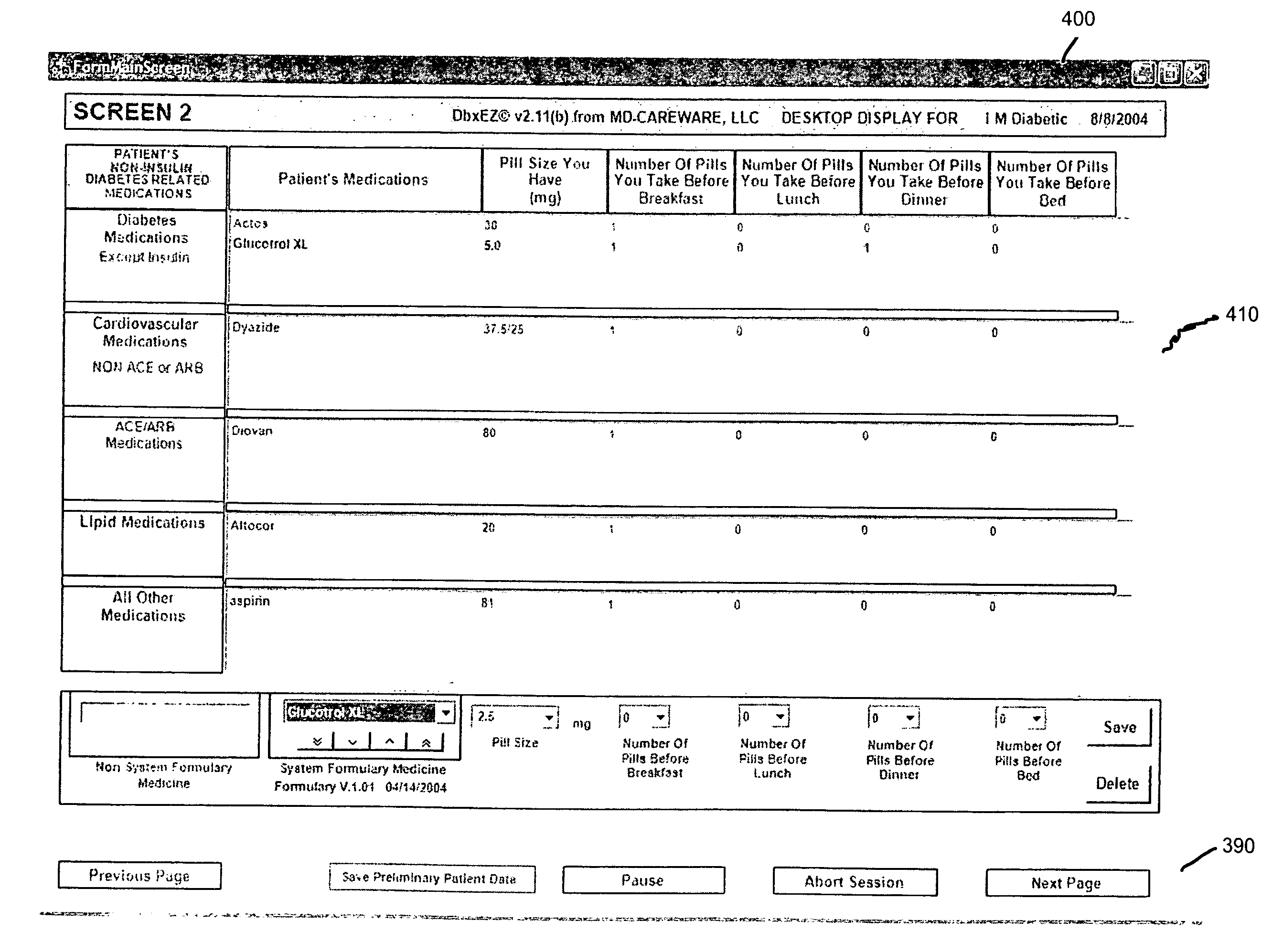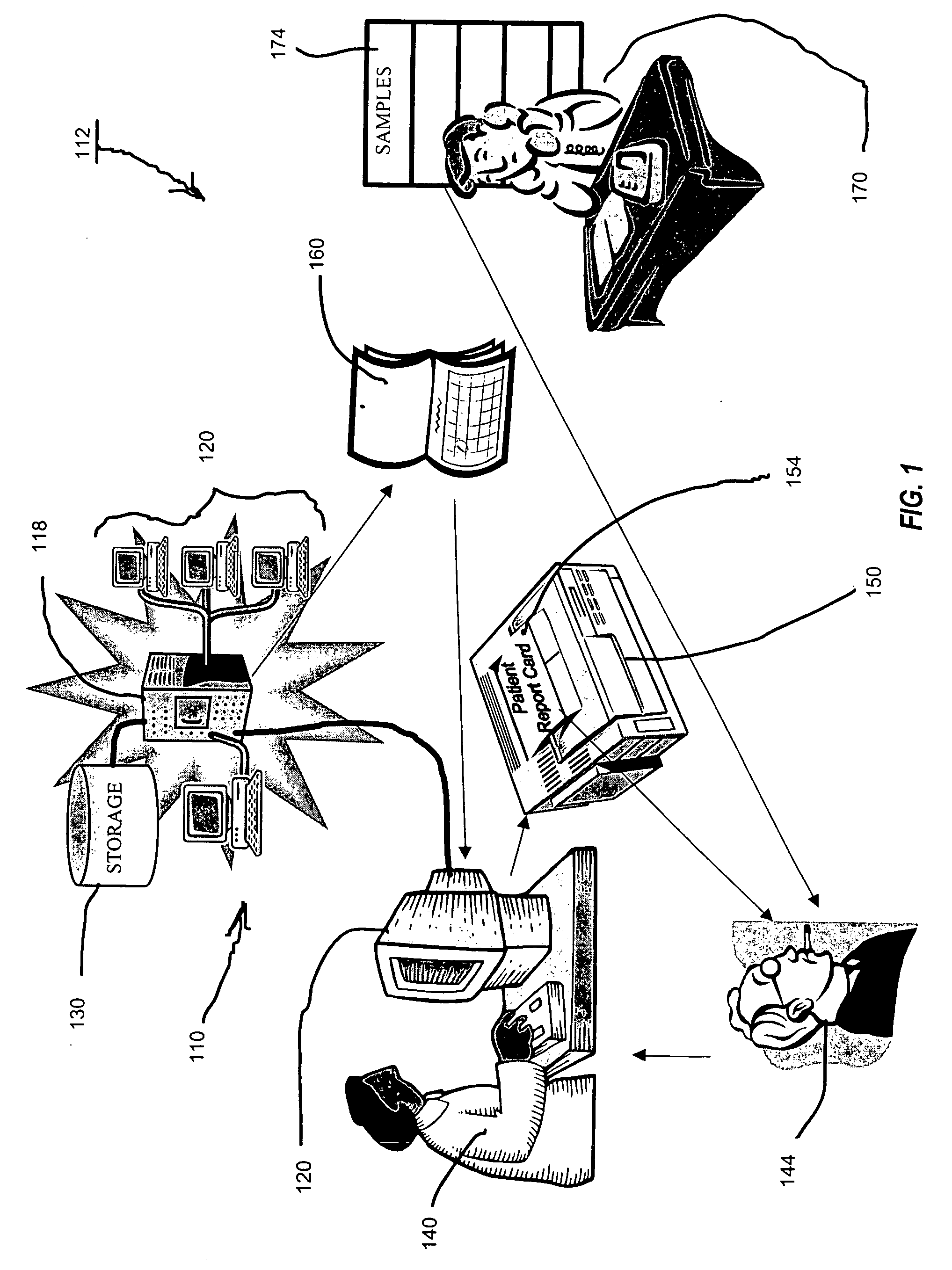System and method for managing diseases according to standard protocols and linking patients to medication samples and related benefits
a technology for managing diseases which is applied in the field of system and method for managing diseases according to standard protocols and linking patients to medication samples and related benefits, can solve the problems of increasing the number and complexity of diabetes treatment options, affecting the quality of diabetes care, and becoming difficult for primary care providers to do well without the benefit, so as to reduce the cost of medications and minimize or eliminate the time needed
- Summary
- Abstract
- Description
- Claims
- Application Information
AI Technical Summary
Benefits of technology
Problems solved by technology
Method used
Image
Examples
Embodiment Construction
[0027] For a general understanding of the present invention, reference is made to the drawings. In the drawings, like reference numerals have been used throughout to designate identical elements.
[0028] As depicted in FIG. 1, an exemplary embodiment of the present invention is a user computer in a medical professional office. Although it is entirely possible to implement the present invention on a stand-alone workstation, the embodiment of FIG. 1 illustrates a networked computer system as will now be described in more detail. It will be appreciated that some aspects of a networked implementation (e.g., centralized data storage and backup, linked to EMR system, etc.) may prove advantageous. Alternatively, it will be appreciated that a laptop, personal digital assistant (i.e., electronic handheld information device) or similar personal computer device may be employed to implement some or all aspects of the present invention.
[0029] Referring to FIG. 1, there is depicted a computer net...
PUM
 Login to View More
Login to View More Abstract
Description
Claims
Application Information
 Login to View More
Login to View More - R&D
- Intellectual Property
- Life Sciences
- Materials
- Tech Scout
- Unparalleled Data Quality
- Higher Quality Content
- 60% Fewer Hallucinations
Browse by: Latest US Patents, China's latest patents, Technical Efficacy Thesaurus, Application Domain, Technology Topic, Popular Technical Reports.
© 2025 PatSnap. All rights reserved.Legal|Privacy policy|Modern Slavery Act Transparency Statement|Sitemap|About US| Contact US: help@patsnap.com



